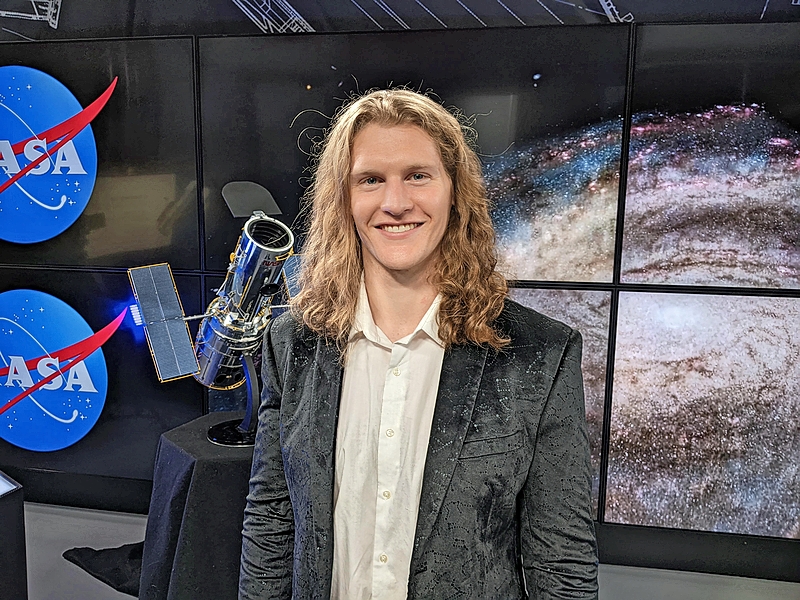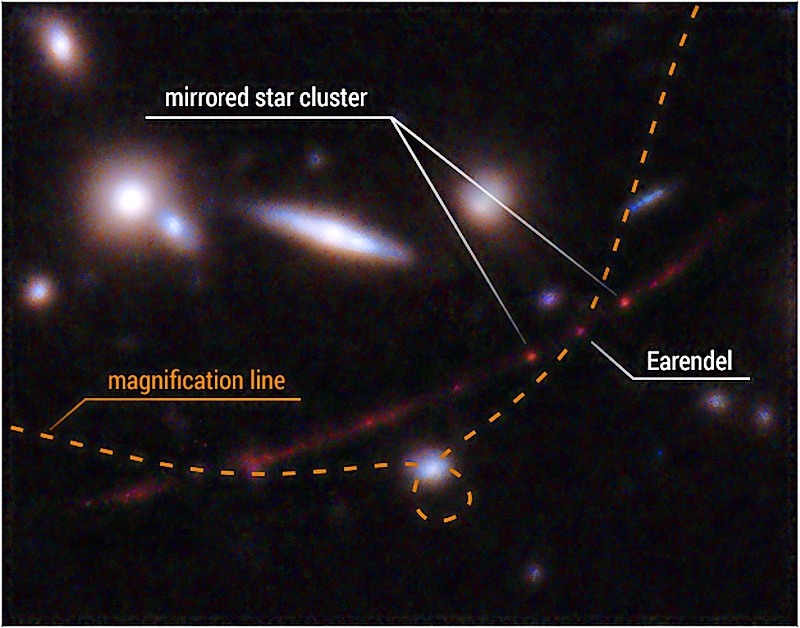Starstruck
By Mark Loehrke
July 2022 View more Kudos

During his high school days at Wheaton Warrenville South, Brian Welch had dreams of someday playing in the NFL. As it turns out, however, Welch, now 27, developed a passion beyond football while he was still in high school—one that would eventually put him in rarefied air (or lack thereof?) in the astronomy world.
“I first got interested in physics thanks to a couple of really great teachers—they made the process of learning really fun and exciting,” Welch says. “When I went to the University of Chicago after high school, they didn’t have an astronomy degree, but after about a year I started doing a few different research projects, and the astronomy project I worked on was the most interesting, so I just kept going from there. That eventually led me to pursue my PhD in astronomy.”
Life, in other words, has a way of sometimes taking people to places they didn’t expect, and in Welch’s case that meant about 13 billion years back in time to discover the oldest and most distant star ever recorded.
“The main goal of the project was to look at very distant galaxies,” Welch says of the 2019 assignment from the Space Telescope Science Institute he took while pursuing his doctoral degree at Johns Hopkins University. “We were able to see further galaxies at higher resolutions with the technology we were using, and in looking at some of the images and data coming out of that program, I just happened to notice one particular object that was kind of interesting. As I kept working on it, it turned into this discovery of the most distant star.”
Welch remembers being in a state of disbelief at first, but after double- and triple-checking his data and coming back time and again to the same conclusion, he knew he was onto something special. Once the discovery was confirmed, it was up to Welch to give the star a name. He chose Earendel, which is the Old English word for “morning star.”

“We’re seeing the star as it was during the first billion years of the universe, which is a period that is often referred to as ‘cosmic dawn,’ ” he explains. “We figured the morning star reference fit in pretty well with that.”
Earendel is so ancient it may not have all the same materials as younger stars, so studying it will offer clues to the early chapters of the universe. Earendel is also huge, with estimates that it’s at least 50 times the mass of our sun and millions of times as bright. Welch and his team’s findings were published in the journal Nature in March.
With his PhD now in hand (as of April), Welch is preparing for his next out-of-this-world challenge as he starts a new research position working with the powerful James Webb Space Telescope to continue the hunt for distant stars and galaxies at the NASA Goddard Space Flight Center outside of Baltimore. And even though he knows he may spend the rest of his career searching the cosmos and never come across a discovery quite as impactful as Earendel, he’s still amazed by and grateful for this shining moment among the stars.
“I feel very fortunate to have been in the position to have this opportunity,” he says. “In truth, this is probably my only 15 minutes of fame, but I’m going to enjoy it while I have it—and hopefully I’ll continue to make interesting discoveries and find other new and cool stuff further down the road.”
Photos courtesy of NASA


